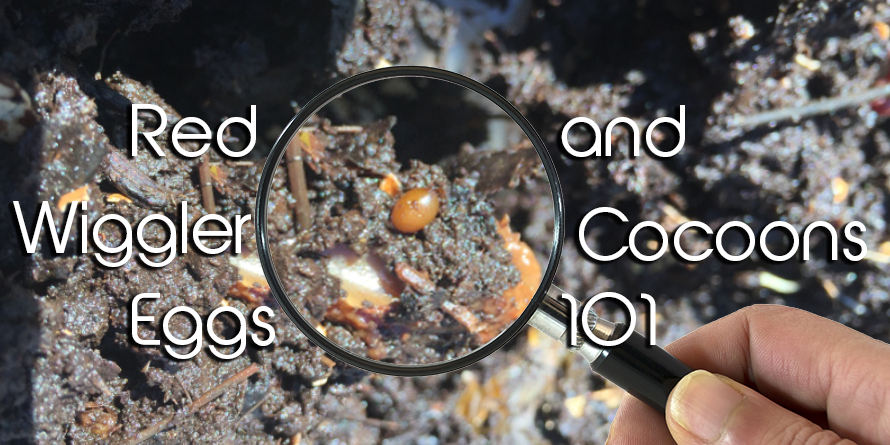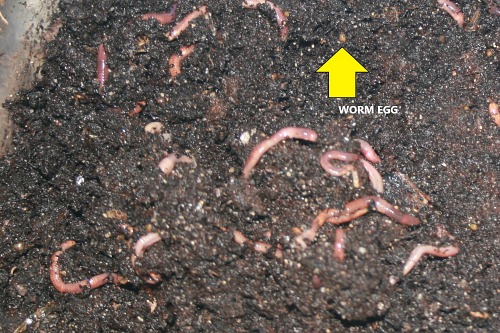Open the Tricks of Red Wigglers: Your Guide to Composting Success
The assimilation of red wigglers into composting methods presents a substantial possibility for improving soil health and advertising sustainability. These organisms are not merely effective recyclers of organic waste; they supply a myriad of benefits that can transform yard monitoring. Comprehending their needs and actions is important for optimizing their capacity, from establishing a proper worm bin to feeding them the ideal products. As we explore the crucial elements of successful vermicomposting, one might question just how these small animals can bring about a much more vibrant and productive garden ecological community.

What Are Red Wigglers?
(Red Wiggler Express)Red wigglers, clinically recognized as Eisenia fetida, are a types of earthworm mostly made use of in composting because of their amazing ability to decompose raw material successfully. These worms are defined by their reddish-brown coloration and a fractional body, usually measuring between 3 to 4 inches in size. Unlike other earthworm varieties, red wigglers flourish in abundant, organic settings, making them optimal for vermicomposting systems.
Belonging To The United States And copyright, they are typically located in rotting fallen leaves and compost stacks, where they play an essential function in nutrient recycling. Their adjustment to residing in a wet, cardiovascular setting enables them to take in huge quantities of organic waste, simplifying into nutrient-rich castings that improve dirt health.
Red wigglers duplicate rapidly, with a single worm with the ability of creating a number of cocoons each week, each including numerous hatchlings. This rapid reproduction rate adds to their effectiveness in composting operations. They like temperatures between 60 ° F and 80 ° F, and their activity degree raises considerably within this variety, more assisting in the decomposition procedure. Recognizing the biology and habits of red wigglers is important for maximizing their capacity in composting applications.
Benefits of Using Red Wigglers
Harnessing the power of red wigglers in composting provides various benefits that enhance dirt health and advertise lasting waste monitoring. These impressive microorganisms successfully damage down natural issue, transforming kitchen area scraps and yard waste into nutrient-rich vermicompost. This finished product is extremely useful for plant development, as it boosts dirt framework, boosts dampness retention, and enhances vitamins and mineral availability.

(Red Wiggler Express)Furthermore, the existence of red wigglers in your composting system can accelerate the composting procedure, creating top quality garden compost in a fraction of the time contrasted to traditional approaches. The castings produced by these worms are likewise including beneficial microbes that even more improve the soil community.
Establishing Up Your Worm Container
Producing a reliable worm bin is an uncomplicated process that can substantially boost your composting efforts. Worm bins can be made from plastic storage space bins, wooden boxes, or readily readily available worm containers.
Following, prepare the bed linens material, which offers as the worms' environment. A mix of shredded newspaper, cardboard, and coconut coir functions well, giving a comfy setting for the worms.

Feeding Your Red Wigglers
To make sure the health and wellness and productivity of your red wigglers, it is necessary to give them with a balanced diet regimen that fulfills their nutritional demands. Red wigglers prosper on a diverse selection of organic products, which not only supply needed nutrients yet likewise promote reliable composting.
Begin official source by incorporating cooking area scraps such as vegetable peels, fruit cores, and coffee premises. Avoid citrus fruits, onions, and garlic, as these can be destructive to worm health and wellness. Furthermore, introduce shredded paper, cardboard, and completely dry fallen leaves to create a well-aerated atmosphere.
Feeding regularity must be monitored; normally, worms can consume half their body weight in food weekly. It is vital to avoid overfeeding, as excess food can cause undesirable odors and draw in pests. A great technique is to add food in percentages, allowing worms to refine it before introducing a lot more.
Keeping dampness levels is also essential; the bedding should be wet but not soaked. Be sure to on a regular basis check the temperature level and pH levels of the bin to guarantee an optimum environment for your red wigglers, ultimately enhancing their composting effectiveness.
Harvesting and Utilizing Garden Compost
A successful composting procedure with red wigglers finishes in the abundant, dark garden compost called vermicompost, which can considerably enhance soil health and wellness and plant growth. Harvesting this nutrient-dense material generally occurs every 3 to 6 months, depending upon the size of your system and the quantity of natural matter being processed.
To collect, delicately separate the compost from the worms and any kind of undecomposed products. One effective approach entails moving the contents of the container to one side and adding fresh bed linens and food to the empty space, urging the worms to migrate. After a couple of days, the garden compost can be collected from the contrary side.
It is vital to make use of vermicompost properly to maximize its advantages. By incorporating vermicompost into your horticulture regimen, you not just reuse natural waste yet also create a growing community that sustains sustainable gardening methods.
Conclusion
In summary, red wigglers offer as remarkable allies in composting initiatives, changing organic waste into nutrient-rich vermicompost (Red Wiggler Express). Their special organic characteristics and effective waste handling capacities contribute substantially to lasting horticulture practices. By understanding the ideal problems for their environment, feeding needs, and garden compost harvesting techniques, gardeners can improve dirt wellness and promote plant vitality. Accepting vermicomposting not just minimizes land fill waste yet also fosters a more ecologically responsible method to horticulture and source administration.